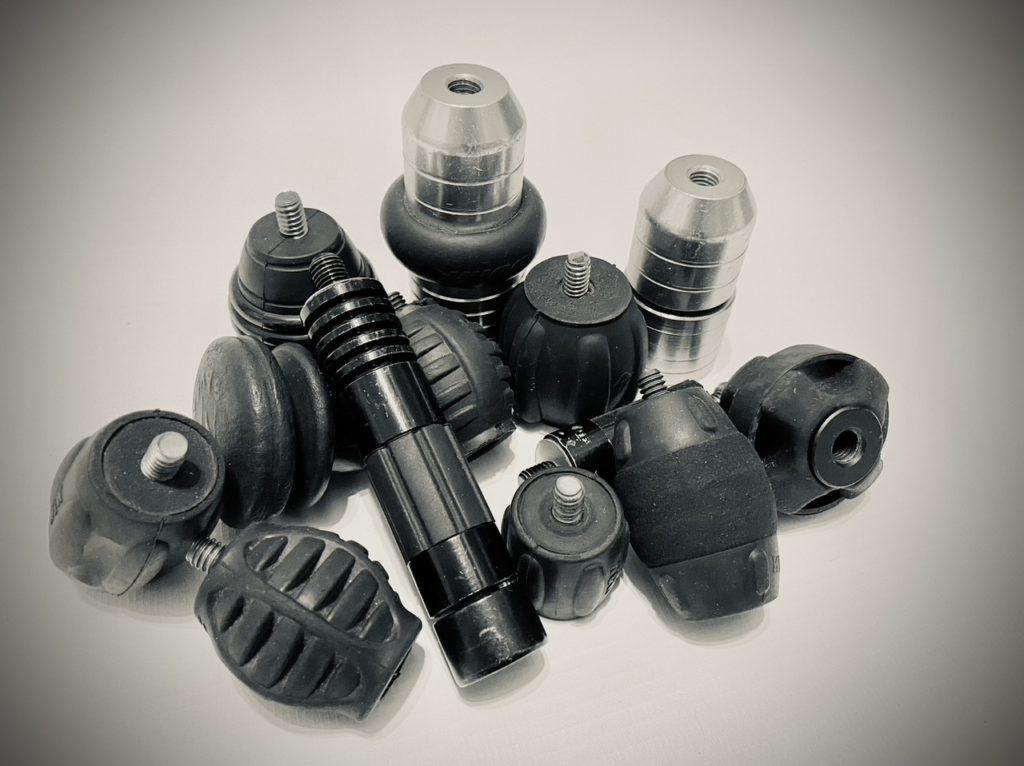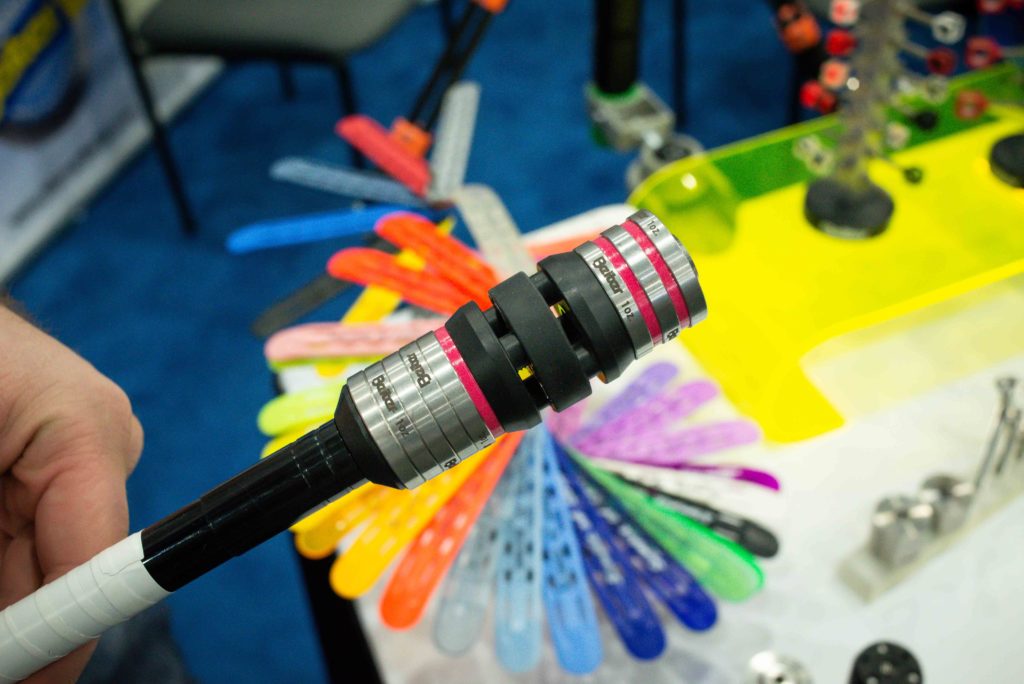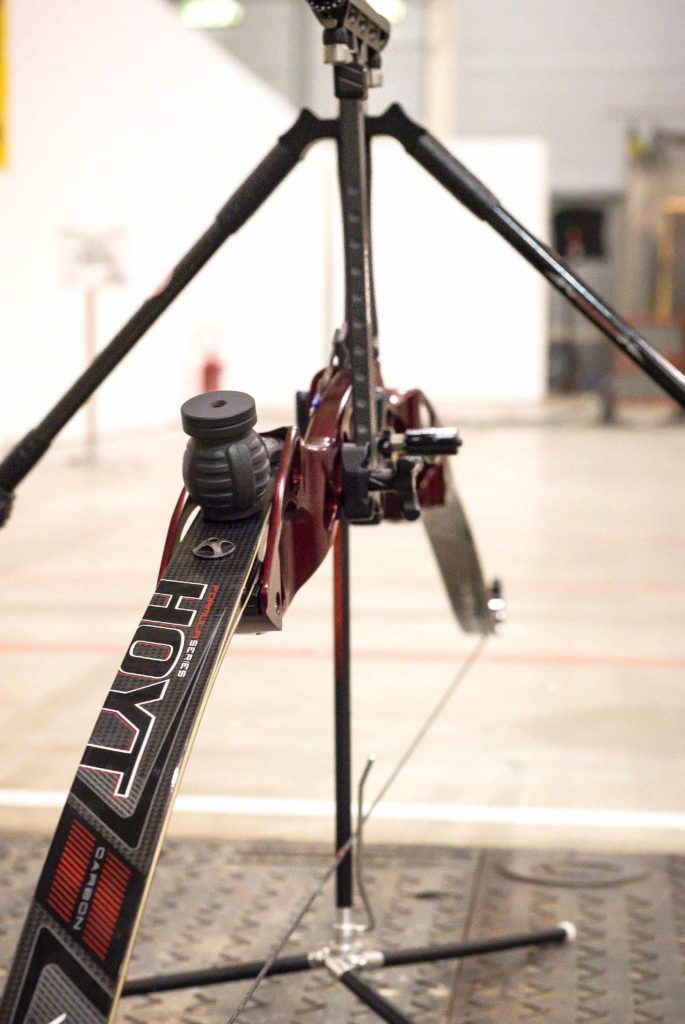Arne Metzlaff looks at something often overlooked

The aim of dampers is to reduce or completely eliminate possible vibrations that occur in the bow. The most common type of archery damper is a rubber block, screwed to the bow or an associated component and with a weight (usually) attached to the opposite side.
The mass of the weight, which is set in vibration after taking a shot, is intended to reduce possible bow movements during and after the shot. This is probably the most common variant of the damper. Depending on the manufacturer, these can vary greatly in shape, colour and design.
But there are also other variants for dampers. The most common variation is the one that is screwed to the end of the stabilisation systems, where additional weights can invariably be screwed on. Because of the greater inertia of the entire system, this results in a smoother movement.
There are also dampers for the sight, for the limbs and to a certain extent for the string – indeed, for anything that can be mounted to a bow. Usually only one thickness of rubber is offered, although the Beiter V-Box system includes interchangeable membranes that can further tune the bow depending on how much weight you have hanging off the end. Super-heavyweight compound setups often don’t use rubber damping systems.
There are also different versions of so-called sight dampers. Some that are screwed onto the free end of the threaded rod of the front sight tunnel in order to dampen this axis when firing. These dampers are often used by compound shooters to help to counteract the usually quite large and heavy scope.
On the other hand, there are dampers that are screwed into the free threads of the “sight rail”, or those that can be attached to the sight arm with the help of a corresponding bracket. These small dampers that are attached to the sight rail work similarly to stabilisation dampers, on the principle that a small weight is attached to the rubber damper.
In general, it can make sense to use dampers here for durability reasons, for example on the front sight in the compound, because there very strong vibrations can occur on a relatively thin threaded rod and these can thus be reduced, which would seem likely to increase the service life of the threaded rod of the front sight.
Limb dampers are also rubber dampers without additional weight and are usually glued to the inside of the limbs, occasionally also to the outside of the limbs.
These dampers are intended to reduce the volume when firing and to create a more pleasant noise and feel for the shooter. They should give a more ‘dead’ feeling to the shot and will reduce launch shock, at the expense of a small amount of speed.

Limb dampers are also available for some compounds, but they work on a completely different principle. Here, the limbs should hit the damper after being shot and thereby stop movement.
There is another variant of dampers for compound bows, in which a metal rod is screwed relatively centrally into the bend and at the end of which sits a kind of “rubber block”. After the arrow has already left it, the string hits this damper and is abruptly stopped.
The aim is for the so-called string stopper to reduce the vibrations that are transmitted to the bow when the bowstring is released. (A similar principle was also briefly introduced by Hoyt for recurve a few years ago, but this did not stick around long.) The principle is exactly the same.
Another possibility of the string damper is a small rubber adhesive pad that is stuck to the limb just above the area where the string rests on the limb and the string strikes it.
In the traditional world you can often see a damper attached directly to the string, which is often made of fur and looks like a kind of “pompon”. These ‘silencers’ slow the string speed down considerably.

Over the years, various compound bows or recurve risers contain dampers that are incorporated into the design. Sometimes simple rubber dampers, sometimes rubber dampers with an integrated weight, were embedded in the milled areas of the middle section. (Win & Win’s newest riser of all is resurrecting the principle.) There are also V-Bars in which small rubber dampers have been integrated.
So there are dampers for the bow in all conceivable shapes, colours and sizes as well as for the most diverse components of the bow. By now you may be asking: which dampers do I need?
At what point on the bow a damper is useful or helpful? In most cases this is a purely subjective question and always depends on the material used, the archer and their own feelings.
With all dampers it should be noted that they hardly have any influence on the actual movement of the bow when aiming, but only change the vibrations after the shot or the noise. They only develop their real effect after the arrow has long since left the bow.
However, their use changes the weight of the bow and thus, under certain circumstances, the distribution of the weight on the bow, which in turn changes the torque of the bow.
This can have a positive influence on the bow movement, which is not due to the actual function of the damper, but purely due to the changed mass and its distribution.
Dampers, ultimately, won’t gain you any points – at least not directly. (A small handful of coaches recommend you don’t use them, for various reasons.)
The real value of dampers is the psychological boost that they can give to the archer by changing the sound and feel of the shot, reducing the noisy or ‘chaotic’ expressions that the bow produces under the stress of launching an arrow.
They also allow a certain amount of fine tuning, to produce ‘your’ bow and ‘your’ sound. They are part of the process of developing your setup, and can give you a boost way beyond their price point. Many technical areas of archery come down to personal preference: none more so than with dampers.

